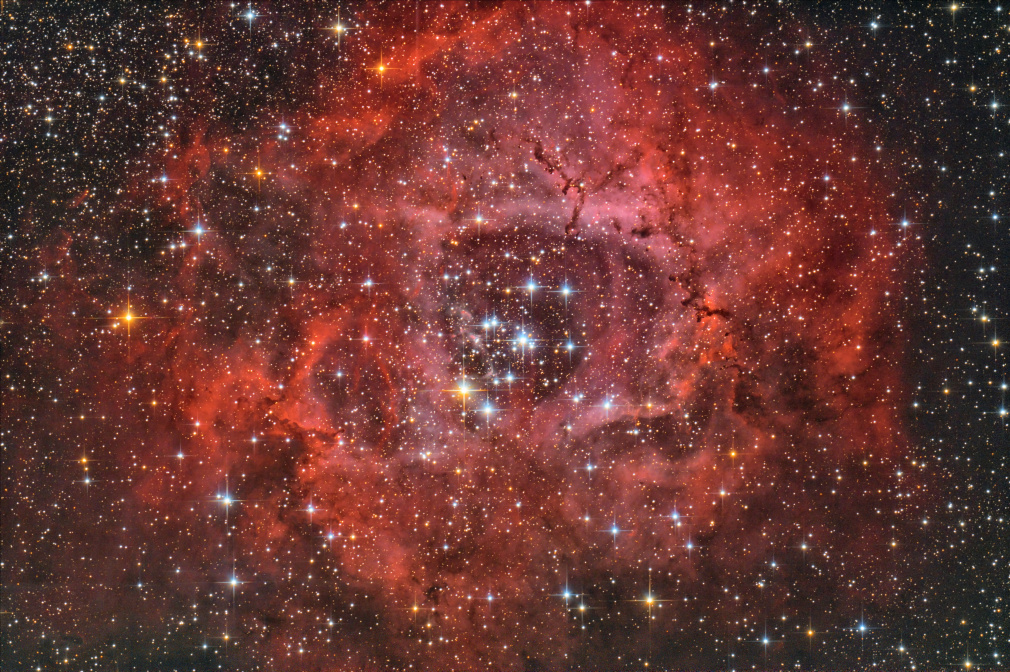The Rosette Nebula is emission nebula and open cluster situated in the constellation of Monoceros, about 5000 light-years from Earth.
The young star cluster was discovered by John Flamsteed in 1690. Aggregated brightness of its stars is 4.8 magnitudes while its apparent dimension is slightly smaller than the disc of full Moon, making the cluster a spectacular target for visual observers having smaller telescopes. However a much larger telescope, extremely dark sky and and a lot of experience are needed to be able to catch a glimpse of the nebula itself. The brightest patches of the nebula were discovered as separate objects by William Herschel's son, John Herschel. They were added to the New General Catalogue as objects NGC 2237, NGC 2238, NGC 2239, NGC 2246. As it turned out later, all these patches were parts of a larger nebula, which was named The Rosette Nebula after its visual appearance. Ever since then NGC 2237 has been used to refer to the whole nebula as well. The star cluster is referred by NGC 2244.
The nebula itself is a giant, spherical shaped H II region, mostly consisting of singly-ionised atomic hydrogen excited to glow by the radiation of the young stars in the cluster. The nebula and the stars in it are not independent from each other. The stars were formed of the matter of the nebula, less than 5 million years ago. The young stars of spectral class O are hot, and they emit intense ionising radiation and strong stellar winds. Strong stellar winds sweep hydrogen away from the cluster, creating a bubble inside the nebula, in a very similar way to the bubble in the Orion Nebula.
Density of hydrogen is not uniform all across the cloud, there are denser and thinner regions, therefore the shape of the bubble is not perfectly spherical, but rather wobbly with a lot of irregularities. At some locations the density is even higher, forming knots which stellar winds were not able to sweep away. In the picture these knots are visible as well defined spots darker or brighter than their surroundings. Brighter spots are behind the cluster and we see their ionised side, while darker spots are between the cluster and us, so we face their much less ionised side. The knots are called globules and the circumstances (like pressure, temperature, density) in them are sufficient for new stars to form. In 2004 NOAO announced they had discovered Herbig-Haro objects in the area, which was a direct confirmation of new stars still being born in the globules of Rosette Nebula.
